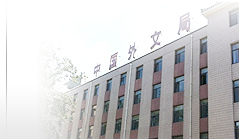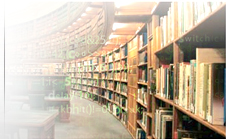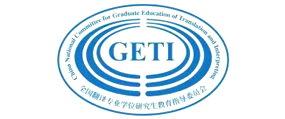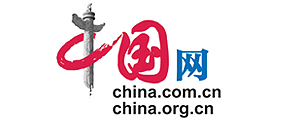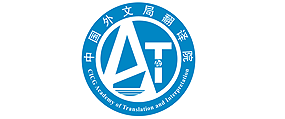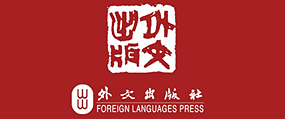目录
理论研究 /05 翻译研究的新趋向:凸显翻译价值之维 罗迪江
13 对翻译信息理论的探索 皮强
21 翻译认知过程研究范式的嬗变与融合 郎玥 侯林平
译史纵横 /
30 《中国评论》汉英翻译和中国文化西传研究 李海军
38 晚清外国历史教科书译介的变通与重构 郭蔚然
译介研究 /
48 斯威夫特在中国的译介与传播 蒋永影
57 杜甫诗歌在俄罗斯的译介与研究 毛志文
翻译教学 /
66 翻译硕士校内实习基地建设的现实审思、原则构建与路径设计 张秀峰 高慧 白晓煌
73 基于平行文本比较模式的MTI旅游翻译教学探讨 单文波
书刊评介 /
81 翻译批评研究的新视角——《20世纪中国翻译批评话语研究》介评 李金树
译家研究 /
87 汉学家译者身份对翻译过程的影响——澳大利亚汉学家杜博妮的中国现当代文学翻译研究 李翼
95 选择与坚守——翻译家高立希的中国当代叙事文学德译之路 冯小冰
学术访谈 /
102 中国哲学典籍的翻译与传播——美国汉学家艾文贺访谈录 吕剑兰
翻译技术 /
108 大型中英连线口译语料库共享平台建设:功能与操作 路玮 张威
翻译评论 /
118 “合乎字面意义”——高本汉《诗经》1950年译本研究 左岩
学术视点 /
126 译介学视域的翻译史书写 何绍斌
学术争鸣 /
134 当下中国翻译话语之哲学反思——以变译理论为例 邵璐
实践探索 /
142 中国现当代小说远距离叙事的译写问题 方开瑞
149 文献翻译标准研究——以规范专利文献翻译实践为视角 朱霈宇 高瑜
155 马拉松赛事中的对外宣传翻译探析 刘国飞
163 意义重构的逻辑空间——2021年韩素音国际翻译大赛法汉语对翻译评析 邱寅晨 胡瑜 董政
自学之友 /
170 The Pleasures of Life (Excerpt) (John Lubbock) 曹明伦译
172 真正的译者绝不能当叛逆者——兼谈对英译汉合格译者的基本要求 曹明伦
178 探究审美认知的神经机制(林巍) 林巍译
181 翻译:在人文与科技间着笔 林巍
词语选译 /
186 《台湾问题与新时代中国统一事业》白皮书重要表述及术语英译参考
英文摘要 /
中文摘要
翻译研究的新趋向:凸显翻译价值之维
罗迪江 郑州大学/广西科技大学
罗迪江 郑州大学/广西科技大学
摘要:翻译事实与翻译价值是翻译研究的两个基本维度。立足于事实与价值的双重逻辑来解读翻译研究,就会发现翻译研究是一种蕴涵着显著的价值立场、深厚的价值意识、鲜明的价值观念的求真善美的翻译价值观。惟有坚守与弘扬翻译研究的价值维度,才能从本体论意义上真正理解翻译之用的超越性,把握工具理性与价值理性、自我价值与他者价值的内在统一;才能从实践层面上把握好负面价值与正面价值的转换关系,看清正面价值背后的负面价值,走出笼罩在翻译价值问题上的迷雾。基于双重逻辑建构翻译价值观,凸显翻译价值之维,应该是翻译研究深入发展的新趋向。
关键词:翻译研究;翻译事实;翻译价值;翻译价值观
对翻译信息理论的探索
皮强 广州大学
皮强 广州大学
摘要:历经了近半个世纪的发展后,我国翻译研究取得了巨大的进步,但新的社会、科技和文化现实也给其提出了新的问题。这些问题从根本上挑战了我们对于已有翻译概念、翻译方法和翻译理论的认识;但同时,越来越多的学者也提出了令人鼓舞的新看法和新理论,本文则是这一努力的延续。文章首先回顾了翻译研究领域中关于翻译定义问题的不同流派,并在此基础上论述了从信息概念构建翻译理论的必要性和可行性;从信息的角度重新看待了传统翻译模型中的原语和目的语文本、译者和意义等因素并揭示了翻译的连续性和普遍性;将翻译定义为主体在自身特定的信息边界中通过其运算机制在特定时间范围内产生意义的过程。
关键词:翻译定义;翻译研究;翻译信息理论;意义
翻译认知过程研究范式的嬗变与融合
郎玥 中国海洋大学 ∣ 侯林平 山东科技大学
郎玥 中国海洋大学 ∣ 侯林平 山东科技大学
摘要:认知科学研究范式影响下,翻译认知过程研究呈现出了从认知主义到联结主义,再到情境/具身认知研究的嬗变过程。这一发展过程中,翻译认知过程研究的认知观、理论模型、研究方法与研究内容等方面也发生了相应改变。在探讨翻译认知研究范式嬗变的基础上,本文指出翻译认知过程研究的发展正面临着亟需解决的“融合”问题,并从神经认知与情境认知的贯通、共性研究与个性研究的整合以及认知研究与人工智能的互融三方面提出了建设性的解决方案,拓展了翻译认知过程研究。
关键词:翻译认知过程;范式;嬗变;融合
《中国评论》汉英翻译和中国文化西传研究
李海军 长沙学院
李海军 长沙学院
摘要:《中国评论》是19世纪末影响最大的在华英语汉学期刊和西方世界了解中国的重要平台。该刊翻译了大量汉语文献,对中国文化西传贡献突出。本文研究了《中国评论》汉英翻译选材、策略、传播和影响,研究发现:《中国评论》汉英翻译选材主题丰富多样,尤其青睐文学作品,但具有系统性不强的缺陷;《中国评论》汉英翻译主要采用归化策略;《中国评论》汉英翻译传播效果良好,产生了较大的影响,是一次成功的中国文化英译活动。本文认为,《中国评论》作为19世纪中国文化西传的“桥头堡”,其汉英翻译的成败得失经验可以为当代中国文化“走出去”提供有益借鉴。
关键词:《中国评论》汉英翻译;翻译选材;翻译策略;传播和影响;启示
晚清外国历史教科书译介的变通与重构
郭蔚然 北京科技大学
郭蔚然 北京科技大学
摘要:晚清外国历史教科书的译介,是中国社会新旧交替的特殊背景下产生的特殊现象,在译介的过程中,由于译者采用与中国本土知识相调和适应的策略,对原著蓝本进行了大量的变通与重构,使得外国史著成为能够引起国人共鸣和关注的教科书,这与晚清社会的变革思潮息息相关,也成为一种特殊的文化现象。
关键词:晚清中国;外国历史教科书;跨文化译介
斯威夫特在中国的译介与传播
蒋永影 外交学院
摘要:18世纪英国作家乔纳森·斯威夫特提供了作者跨文化旅行的典型案例。外来文学的译介开启了晚清文学新视野,斯威夫特也伴着这股潮流而涌入。本文结合晚清、现代时期以及新时期以来三个阶段的文化语境,梳理了百年来斯威夫特在中国的译介传播情况,从中我们看到了斯威夫特在文学之外的更多可能性,也看到了外国作家在中国文学走向现代化过程中所起的重要作用。
关键词:斯威夫特;中国;译介;传播
杜甫诗歌在俄罗斯的译介与研究
毛志文 武汉大学
摘要:本文系统梳理了从19世纪末至今杜甫诗歌在俄罗斯译介与研究的历史脉络,探究各历史阶段俄罗斯主要汉学家们对杜甫诗歌的译介策略和艺术特色,剖析他们对杜甫生平及其作品研究的理论视角和创新之处,阐释杜甫诗歌在各阶段译介和研究的特点与影响,其被俄罗斯社会广为接受的原因。该研究不仅增强了唐诗在俄罗斯的传播和影响力,而且为推动中国传统优秀文化走出去提供助益。
关键词:杜甫;俄罗斯;译介与研究
翻译硕士校内实习基地建设的现实审思、原则构建与路径设计
张秀峰 高慧 白晓煌 首都师范大学
摘要:翻译硕士(MTI)实习基地多以校外实习基地为主,衍生了校外实习基地实习机会不均衡、校外实习基地实习内容与校内学习内容不匹配、校外实习基地专业实践与校内理论学习不闭环、校外实习基地提供的实习岗位类型不丰富等问题,而校内实习基地则可以有效弥补校外实习基地的这些不足。MTI校内实习基地在建设过程中,应坚持真实性、匹配性和本土性的原则,同时其建设路径设计既要注重实习岗位、实习内容、实习形式和实习指导等方面的建设,更要加强校内实习基地的管理和考核认证,构建中国翻译协会等专业组织参与的MTI校内实习基地考核认证体系。
关键词:翻译硕士;校内实习基地;建设路径设计
基于平行文本比较模式的MTI旅游翻译教学探讨
单文波 湖北大学
摘要:平行文本是指产生于不同语言和文化环境,但文本类型和交际功能相近或相同的文本。作为一种重要的双语研究语料,平行文本为开展应用翻译教学特别是旅游翻译教学提供了可参照的规范性文本,教师可以充分利用平行文本构建一个适用于MTI旅游翻译教学的平行文本比较模式,通过课前选择平行文本,课中比较平行文本,课后学生依据平行文本改译和教师课堂讲评译文等方面探讨如何有效利用旅游平行文本,引导学生译出地道的、符合目标语读者阅读习惯的译文,提升旅游翻译教学成效。
关键词:平行文本;比较模式;MTI;旅游翻译教学
翻译批评研究的新视角——《20世纪中国翻译批评话语研究》介评
李金树 四川外国语大学
摘要:《20世纪中国翻译批评话语研究》一书启筚路蓝缕之功,以批评事件为经,以历史语境为纬,既“证枝叶”又“考大体”,较为系统地考察并勾勒了自晚清以来整个20世纪翻译批评观念演变的历史脉络。作者跳出翻译批评研究规定性的藩篱,借鉴翻译研究主流范式,描摹、阐释20世纪翻译批评话语生成的历史印迹,学理上厘清了翻译批评、政治话语、文化动向等因素互证、互释之关系。该书的出版,既为翻译批评(史)研究提供了方法论参照,又拓展了翻译批评研究的视阈,深化人们对翻译批评的价值认知。
关键词:翻译批评;历史语境;话语
汉学家译者身份对翻译过程的影响——澳大利亚汉学家杜博妮的中国现当代文学翻译研究
李翼 北京第二外国语学院
摘要:中国现当代文学作品在海外传播的历史进程中,汉学家发挥了重要作用。近年来对汉学家译者的研究主要集中在生平与贡献介绍、翻译思想、翻译策略、译者风格、翻译批评等领域,较少有研究从宏观的角度探讨汉学家的译者身份与其翻译活动的关系。本文以澳大利亚汉学家杜博妮的翻译活动为研究对象,从译者身份出发,对其翻译文本选材、文本解读以及文本翻译展开描述性研究,考察汉学家的译者身份及研究视野对其翻译过程的影响。结合汉学家的译者身份来考察其译介活动,不仅能丰富译者研究的内涵,也能凸显汉学家在文学译介活动中的独特风格和译介方式,勾勒和预测其译作的大致面貌,为中国文学的外译提供有益借鉴。
关键词:译者身份;翻译过程;汉学家;杜博妮
选择与坚守——翻译家高立希的中国当代叙事文学德译之路
冯小冰 西安外国语大学
摘要:作为读者覆盖面最广的文学体裁,叙事文学无疑是中国文学“走出去”的译介重点,而译者作为翻译主体在其中的能动选择决定了译介的质量和效果。翻译家高立希作为中国当代叙事文学德译的标志性人物对中国文学在德语世界的传播做出了开拓性的贡献。本文以高立希近40年的中国当代叙事文学德译历程为线索,围绕“译什么”、“如何译”、“怎么介”这三个中国文学外译的核心议题,探析高立希在翻译过程中的选择及其对中国文学德译产生的积极影响。
关键词:中国当代叙事文学;德译;高立希;选择
中国哲学典籍的翻译与传播——美国汉学家艾文贺访谈录
吕剑兰 四川外国语大学/衡阳师范学院
摘要:艾文贺教授是美国当代著名的哲学家和汉学家,翻译了多部中国哲学典籍,代表译作有《道德经》、《孙子兵法》和《陆王学派文集选读》等。他的译作精确、可读性强,并包含丰富的副文本,让英语世界读者得以更深入、更全面地理解中国哲学。本文通过对艾文贺教授进行深度访谈,探讨其中国哲学典籍的翻译选材和翻译方法,介绍中国哲学在英语世界的传播现状,并提出促进中国哲学典籍传播的启发性建议。
关键词:艾文贺;中国哲学典籍;访谈
大型中英连线口译语料库共享平台建设:功能与操作
路玮 北京外国语大学/河北大学 张威 北京外国语大学
摘要:鉴于口译实践的特殊性和采样困难,口译语料库建设往往存在库容规模小、语料加工难、标注标准不一等问题。同时,由于现有语料库多为研发机构或少数人员使用,社会化、商业化应用不足,严重制约了口译语料库及其研究的学术传播力和社会影响力。大型中英连线口译语料库共享平台秉持“共建、共管、共享”的原则,通过互通共建及“参与式”管理,实现语料库多渠道动态扩容。平台运行方对口译语料的加工及标注进行规范化处理,并提供分类检索、难点剖析、策略讲解、数据分析等功能,致力于口译实践、教学、研究三位一体、协调并进,以期进一步推动中国口译教学与研究向前发展。
关键词:共享平台;口译语料库;功能
“合乎字面意义”——高本汉《诗经》1950年译本研究
左岩 广东外语外贸大学
摘要:高本汉《诗经》1950年译本借鉴西方语言学与中国训诂学的相关成果,建构出一套《诗经》文献型翻译的方法体系,以征实求信的训诂原则,精细化的翻译策略,内生性的诗旨解读,尽可能贴近原文的字面意义,促进《诗经》翻译的科学化、规范化与标准化,对中国典籍翻译具有重要的参考价值。另一方面,高本汉译本过多依靠语言的工具理性,忽视源语的历史文化内涵,导致整个翻译活动有封闭单一的弊病。
关键词:《诗经》;高本汉;忠实;语言学
译介学视域的翻译史书写
何绍斌 上海海事大学
摘要:翻译史研究在翻译研究的文化转向及文化研究的翻译转向语境中,逐渐成为人文学科研究的热点。关于翻译史的讨论尽管热烈,但还有一些盲点,尤其是对具体翻译史的编纂缺乏直接指导意义。译介学因其新颖的翻译观和传播观,对翻译史理论及编写具有较大参考价值,在其思想指导下的两部翻译史正在经受检验。可以根据目的、对象和理念的差异编写多元化的翻译史。
关键词:翻译史;译介学;文化转向;翻译转向
当下中国翻译话语之哲学反思——以变译理论为例
邵璐 中山大学
摘要:过于强调翻译理论的地方性易陷入本土和国际二元论窠臼,我们应强调的是对翻译研究的“中国贡献”。就翻译理论的反思而言,需要有哲学维度的思辨和批评。对已发展成熟的理论话语体系展开分析和讨论,可提升中国翻译话语的生命力、活力和特色。植根于本土、从严复达旨观而生的变译理论自有其特色,但要从翻译思想发展成翻译理论,却仍道阻且长。从规定性翻译研究过渡到描写性翻译研究,再到哲理思辨,辅以具有特色的丰富案例,也许是变译理论的可持续性发展途径。
关键词:中国翻译话语;哲学反思;变译理论
中国现当代小说远距离叙事的译写问题
方开瑞 广东外语外贸大学
摘要:远距离叙事由“讲述”模式构成,在新旧小说中具有不同的特征。在远距离叙事状态下,现当代小说的叙述者往往放弃传统赋予的权威,降低姿态,进而融于故事和人物,而非深度介入叙事或发挥明显的主导作用。本文从叙述者融于故事和人物两个方面,研究中国现当代小说远距离叙事的译写问题,并分别探讨相关的译写策略。
关键词:中国现当代小说;远距离叙事;译写
文献翻译标准研究——以规范专利文献翻译实践为视角
朱霈宇 中国政法大学 ∣ 高瑜 国家知识产权局
摘要:专利文献是技术创新的载体,在创新驱动发展的大背景下,如何利用好世界各国的专利文献意义重大,而专利文献的翻译工作在其中发挥了重要作用。本文从建立专利文献翻译标准的必要性出发,概述了标准制定中应重点关注的问题,全文围绕专利文献的科技前沿性、法律专业性以及规范表述性三个维度的主要特征,结合翻译实践中的真实案例分析了目前专利文献翻译应注意事项或存在的常见问题及其主要原因,并以此为基础对建立专利文献翻译领域的标准体系的必要性和现实意义寄予了期望。
关键词:专利文献;翻译实践;翻译标准
马拉松赛事中的对外宣传翻译探析
刘国飞 扬州市体育竞赛管理中心
摘要:当前,以马拉松为代表的体育运动正蓬勃发展。为满足世界田联、中国田径协会标牌赛事等级评定要求,提高赛事国际化水平,各马拉松办赛单位不断加强赛事中的对外宣传翻译工作。但是,术语翻译有误、选词不恰当等问题也客观存在。本文从马拉松赛事对外宣传翻译资料入手,分析其现存问题,并根据权威机构发布的路跑组织手册、田径竞赛规则等资料,提出修改意见及改善马拉松赛事宣传翻译现状的对策。
关键词:马拉松;对外宣传翻译;现存问题
英文摘要
(刘亚猛修订)
(刘亚猛修订)
Calling for a Value-oriented New Approach in Translation Studies
By LUO Dijiang (Zhengzhou University, Zhengzhou, China / Guangxi University of Science and Technology, Liuzhou, China) p. 5
By LUO Dijiang (Zhengzhou University, Zhengzhou, China / Guangxi University of Science and Technology, Liuzhou, China) p. 5
Abstract: Translation-related facts and values are the two fundamental dimensions of translation studies. An examination of this discipline from an axiological perspective would lead to the discovery that it is deeply embedded in a distinctive set of values and that its findings are always informed with certain value judgments. Such being the case, heightening the self-consciousness of its own intrinsic value dimension holds the promise for translation studies to transcend a narrow pursuit of utilities, achieve a unity between instrumental rationality and axiological rationality, reach a balance between the interests of the self and those of the other, and turn negative values into positive ones. A value-oriented approach should therefore be promoted as a new trend in translation studies.
Keywords: translation studies; translation-related fact; translation-related value; utility; rationality; self; other
Information-centered Theory of Translation: An Exploration
By PI Qiang (Guangzhou University, Guangzhou, China) p. 13
By PI Qiang (Guangzhou University, Guangzhou, China) p. 13
Abstract: Despite its great achievements made over the past half century or so, the field of translation studies remains confronted with a whole set of new problems arising due to the emergence of new societal, technological and cultural realities. In response to these problems, scholars concerned have been subjecting currently dominant translation concepts, methods and theories to an intense reexamination and re-evaluation, and have come up with a growing number of new ideas and theories. As part of the theoretical exploration, this paper argues for the necessity and practicality of an information-centered approach to translation studies on the basis of three assumptions: that translation is a continuous activity; that it has a ubiquitous presence in human discourse; and that it is the process whereby the translating agent makes meaning within relevant timespan and informational boundary by applying certain computational mechanism.
Keywords: information; translation; definition; Translation Studies; meaning-making
Paradigmatic Shift and Integration in Studying the Cognitive Process of Translation
By LANG Yue (Ocean University of China, Qingdao, China) & HOU Linping (Shandong University of Science and Technology, Qingdao, China) p. 21
By LANG Yue (Ocean University of China, Qingdao, China) & HOU Linping (Shandong University of Science and Technology, Qingdao, China) p. 21
Abstract: A series of paradigmatic shifts in cognitive science from cognitivism to connectionism and then to situated/embodied cognition have brought with them changes in cognitive studies of the process of translation, leading to diverse views about what ought to be the normative theoretical model, research method and research area for this sub-field of translation studies. For a synthesis of these diverging assumptions, we propose a model of integration that combines neuro-cognition with situated/embodied cognition, universality with individuality, and cognitive studies with artificial intelligence. Further studies are needed for a productive application of this integrated line of research.
Keywords: cognitive process of translation; paradigm; shift; integration
C-E Translations Published in The China Review and the Dissemination of the Chinese Culture in the West
By LI Haijun (Changsha University, Changsha, China) p. 30
Abstract: The China Review was the most influential China-based sinological periodical published in English during the late 19th century, and a significant source of knowledge about China then for the Westerners. By publishing large amount of English translations of Chinese documents and texts, it served as an important bridge for cultural exchanges between China and Western countries. A close look into the way The China Review carried out its C-E translation shows that even though its selection of source texts covers a wide and varied range of subjects, the coverage is by no means a systematic representation of all relevant and noteworthy subject areas. As for the mode of translation, domesticating appears to be the choice for most of its renditions. Despite these defects, The China Review was without doubt a success in turning Chinese cultural texts into English for dissemination in the West. From its effective mode of C-E translation, China can still draw some useful lessons in its current efforts to disseminate Chinese culture abroad.
Keywords: C-E translation; The China Review; selection of source texts; translation strategy; dissemination and influence; enlightenment
Adaptation and Reconstruction in Late Qing Translation of Foreign History Textbooks
By GUO Weiran (University of Science and Technology Beijing, Beijing, China) p. 38
By GUO Weiran (University of Science and Technology Beijing, Beijing, China) p. 38
Abstract: The rendition of foreign history textbooks in late Qing China attracts attention as an unwonted episode in China’s modern history of translation. Undertaking the project when the traditional Chinese society was going through a radical transition to a new one, the translators involved tended to adopt a strategy of “harmonizing” whereby the contents of the source texts were so heavily adapted to the local knowledge system that much of the original became reconstructed. Foreign history books were thus turned into readings informed with the local ethos of social change and resonating with the sentiments of their readers.
Keywords: Late Qing China; foreign history textbook; cross-cultural translation
Translation and Circulation of Jonathan Swift’s Works in China
By JIANG Yongying (China Foreign Affairs University, Beijing, China) p. 48
Abstract: This article explores the century-old translation and circulation of Swift’s works in China against the historico-cultural contexts of the late Qing, the modern times and the currently on-going new historical period. The survey not only shows the important role a foreign writer’s works have played in the modernization of Chinese literature, but also throws lights on other possibilities which Swift’s translation and introduction could open up beyond the literary realm. In Swift, we have thus an interesting site for studying cross-cultural travelling of discourse.By JIANG Yongying (China Foreign Affairs University, Beijing, China) p. 48
Keywords: Jonathan Swift; China; translation; communication; cross-cultural travelling
Translation and Study of Du Fu in Russia
By MAO Zhiwen (Wuhan University, Wuhan, China) p. 57
By MAO Zhiwen (Wuhan University, Wuhan, China) p. 57
Abstract: This paper offers a systematic account of the translation, interpretation and research of Chinese poet Du Fu’s works in Russia since the end of the 19th century. On the basis of a close examination of the translation strategies adopted by Russian sinologists of different historical periods, the paper identifies the artistic features the Russian translations of Du Fu’s poems tend to display, analyzes the innovative theoretical perspectives brought to bear on Russian sinologists’ introduction of Du Fu’s life and works, discusses Du Fu’s literary influence in Russia, and explains why Du Fu’s poems have been widely circulated among the Russian reading public. Russian translation and study of Du Fu significantly expand the accessibility and circulation of Tang poetry in Russia and, in this sense, has done much in helping to promote traditional Chinese culture abroad.
Keywords: Du Fu; Russia; Translation and Research
How to Construct an On-Campus Practical Training Base for MTI Students
By ZHANG Xiufeng, GAO Hui &BAI Xiaohuang (Capital Normal University, Beijing, China) p. 66
By ZHANG Xiufeng, GAO Hui &BAI Xiaohuang (Capital Normal University, Beijing, China) p. 66
Abstract: Off-campus practical training, which has so far been the norm for the internship of MTI students, tends to cause problems such as uneven training opportunities for students, a mismatch between the instructions they have received and the practices they actually participate in, a failure to close the loop of theoretical learning and professional training, and a lack of variety in available internship positions. These problems can be eliminated with the construction of an on-campus base for practical training. Any conception of such a project should be guided by the principles of authenticity, correspondence and localization. Its design must take into consideration not only the internship positions and the contents and forms of instruction, but also the management of the on-campus base and, last but not least, the establishment of an assessment and certification system. Because of the last consideration, the involvement of professional organizations such as Translators Association of China is also a necessity.
Keywords: MTI; on-campus internship base; design; construction
A Comparison of Parallel Texts-based Model for MTI Tourism Translation Teaching
By SHAN Wenbo (Hubei University, Wuhan, China) p. 73
By SHAN Wenbo (Hubei University, Wuhan, China) p. 73
Abstract: Offering useful bilingual research data, parallel texts are normally employed as a serviceable reference in pragmatic translation teaching, especially in the teaching of tourism translation. This paper proposes a pedagogical model for MTI-level courses of tourism translation, one that makes full use of a comparison between relevant parallel texts. By selecting such texts before class and asking the students to compare them both in and after class, and by offering comments and feedbacks on the students’ exercises on translation that refer specifically to the parallel texts assigned, teachers would facilitate students’ acquisition of an authentic and acceptable mode of translation, and are thus more likely to achieve success in tourism translation teaching.
Keywords: parallel text; comparison; teaching; MTI; tourism translation

